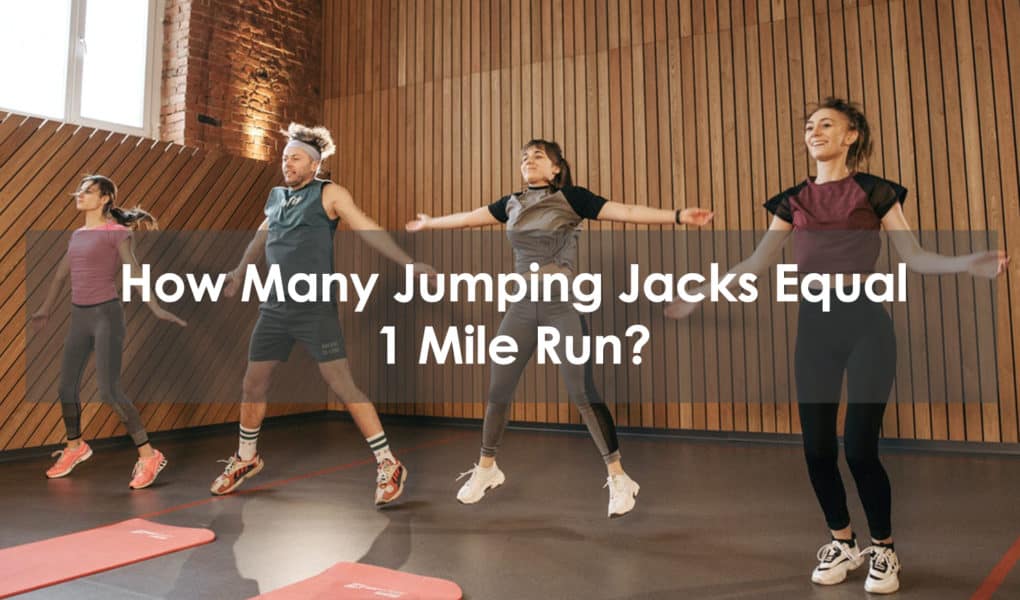If you’re looking to torch calories and lose weight, high-intensity training such as jumping jacks can be a great way to hit your goals as it dramatically elevates your heart rate and provides a solid calorie burn. Jumping jacks can also be a handy alternative to running, but how do they compare?
Well, the number of jumping jacks you’ll need to do in order to match the benefits of running one mile largely depends on your weight and the intensity of the exercise. For reference, a 180-pound person would need to do roughly 900 jumping jacks to equal the number of calories burned during a one-mile run.
Here, we’ll explain how to work out the correct amount of jumping jacks according to your weight, as well as look at the benefits of jumping jacks and how to perform them correctly.
How to work out how many jumping jacks equal one mile
Each person will burn a different number of calories per mile of running depending on a variety of factors, the most important of which are weight and intensity. The same logic applies to calories burned while doing jumping jacks.
A 180-pound person will burn roughly 150 calories per mile of running, working off the average of them taking about 12 minutes to complete that distance at a steady pace.
They will burn approximately 10 calories per minute while doing jumping jacks, so in order to burn 150 calories, they’ll need to perform these for 15 minutes. If we’re working off the safe assumption that they’ll execute 60 jumping jacks every minute, then we just need to multiply 15 by 60, which comes to 900.
To help you work out how many jumping jacks you’d need to do, here are some approximations of calories burned while running a 12-minute mile depending on weight:
| Bodyweight (lbs) | Calories burned per mile |
| 130-pounds | 107 calories per mile |
| 155-pounds | 128 calories per mile |
| 180-pounds | 150 calories per mile |
| 205-pounds | 160 calories per mile |
| 230-pound person | 190 calories per mile |
These figures will not be entirely accurate as your fitness level also comes into play, but they are a solid framework to reference based on your body weight.
Benefits of jumping jacks
1. Great for weight loss
Jumping jacks are a form of plyometrics, which is a type of training that combines speed and force to create explosive movements. So, performing jumping jacks for an extended period of time can be a pretty intense workout and is a great way to torch calories.
2. It’s a total-body workout
What also helps jumping jacks stand out from other bodyweight movements is that they work your entire body, not just a particular part like push-ups, which just target your upper body. A total-body workout is one of the most effective ways of burning calories.
3. It helps improve cardiovascular health
Regular jumping jacks also improve your cardiovascular health as they keep your heart rate elevated, but they also serve as strength training as well, despite you not using any extra weight. This is because of the force you need to produce to jump off the floor and extend your limbs.
4. It helps improve overall bone health
The impact jumping jacks place on your joints and bones also helps to improve your overall bone health and strengthen them. Studies have shown that high-impact exercises like jumping jacks help increase bone density, which makes them stronger and keeps them healthier for longer as we age.
5. It helps improve speed and explosiveness
As a plyometric exercise, jumping jacks can also improve your overall performance as they enhance your speed and explosiveness. This makes them an excellent exercise to consider in your daily workout.
How to perform jumping jacks
- Stand up straight with your feet close together but not quite touching and your arms straight down by your sides.
- Jump upward and separate your legs so that you land with your feet just outside of hip-width. As you jump, also raise your arms up, keeping a slight bend in them, so that your hands almost touch above your head.
- Return to the starting position by jumping again and bringing your arms back down to your sides and your legs together. Repeat for time or reps.
Tips
- As well as a slight bend in your arms, also maintain a small bend at your knees to soften the impact as you land.
- Focus on maintaining a steady rhythm, rather than going for maximum speed. You can always go faster once you’ve built some momentum.
- Keep your core engaged and your back straight throughout the exercise.
- You can make them more challenging by turning them into explosive jumping jacks. When you bend to jump, squat completely down and bring your arms in before exploding upward as high as you can.
Final Thoughts
Including jumping jacks in your normal workout can be an excellent way of burning calories quickly and improving your overall fitness. If you’d rather do this exercise than go on a run, then hopefully this guide has outlined how many jumping jacks you need to do in comparison to running one mile.
Frequently Asked Questions
Can I replace running with jumping jacks?
This depends on your fitness goals – if you’re looking to improve your running speed and endurance then, obviously, you will need to run. However, if your objectives are more general, such as losing weight, then you can replace running with jumping jacks, so long as you do enough of them and regularly.
That being said, it is best to vary your workouts and do different types of exercise to ensure your entire body is worked.
What will 500 jumping jacks a day do?
You’ll certainly be burning calories and improving fitness, but after a while, you’re going to hit a plateau, which is when your body has adapted to the training you’re doing and so the exercise has minimal effect on it.
You should adapt and alter your training over time to prevent this from happening, so doing the same amount of jumping jacks every day isn’t advised.








